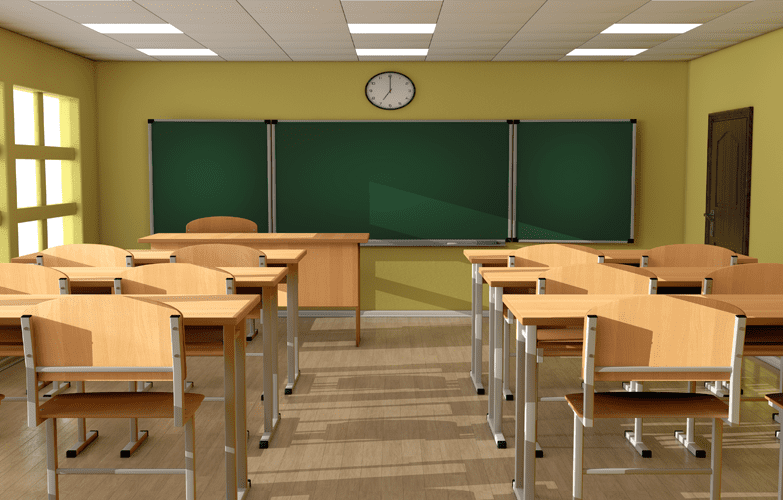The Rise of Modular Portable Classrooms
Education & the Rise of Modular Portable Classrooms As the needs of students and educators evolve, so too must the […]

Education & the Rise of Modular Portable Classrooms
As the needs of students and educators evolve, so too must the infrastructure that supports their learning journey. Traditional classroom structures, often rigid and permanent, are being challenged by a new innovation: modular portable classrooms. These dynamic learning spaces offer a range of benefits, from cost-effectiveness to sustainability and adaptability. In this exploration, we delve into the world of modular portable classrooms, examining their advantages, applications, and the potential they hold for reshaping education worldwide.
Understanding Modular Portable Classrooms
Modular portable classrooms, also known as prefabricated or relocatable classrooms, are structures built off-site in factory settings and then transported to their final destination for assembly. Unlike traditional classrooms, which are constructed on-site, modular classrooms offer a faster, more efficient construction process. They are typically made of durable materials such as steel, wood, or aluminum, ensuring longevity and sustainability.
Advantages of Modular Portable Classrooms
Cost-Effectiveness: One of the most significant advantages of modular portable classrooms is their cost-effectiveness. The off-site construction process reduces labor and material expenses, resulting in lower overall costs compared to traditional construction methods. Additionally, modular classrooms can be leased or purchased, providing schools with flexible financial options.
Time-Efficiency: Time is of the essence in education, and modular portable classrooms excel in this aspect. Since they are prefabricated off-site, construction can occur simultaneously with site preparation, significantly reducing project timelines. This rapid deployment allows schools to address urgent space needs quickly, whether due to increasing enrollments or renovations.
Flexibility and Adaptability: Modular portable classrooms offer unparalleled flexibility, allowing schools to adapt to changing needs effortlessly. These structures can be easily reconfigured, expanded, or relocated as enrollment numbers fluctuate or educational programs evolve. This adaptability ensures that schools can efficiently utilize their resources without being constrained by fixed infrastructure.
Sustainable Solutions: In an era where environmental sustainability is a top priority, modular portable classrooms present an eco-friendly alternative to traditional construction. The off-site fabrication process minimizes waste generation and energy consumption, while reusable materials and energy-efficient designs further reduce environmental impact. Additionally, modular classrooms can be equipped with renewable energy systems such as solar panels, promoting sustainability and reducing long-term operational costs.
Quality and Safety: Contrary to misconceptions, modular portable classrooms adhere to stringent building codes and quality standards. Their factory-controlled production ensures consistent quality and precision, resulting in durable and safe structures. Furthermore, modular classrooms can incorporate advanced safety features such as fire-resistant materials and seismic reinforcement, providing peace of mind to students, educators, and parents alike.
Applications of Modular Portable Classrooms:
The versatility of modular portable classrooms extends beyond traditional educational settings, finding applications in various contexts
Temporary Classroom Solutions: Modular classrooms serve as temporary solutions for schools facing immediate space shortages due to renovations, natural disasters, or unexpected enrollment increases. Their quick installation and removal make them ideal for addressing short-term needs without disrupting the learning environment.
Remote and Rural Communities: In remote or rural areas where access to traditional construction resources may be limited, modular portable classrooms offer a practical solution. These prefabricated structures can be easily transported to remote locations, providing students with quality learning spaces that meet educational standards.
Disaster Relief and Emergency Response: During emergencies such as natural disasters or humanitarian crises, modular portable classrooms play a vital role in providing temporary shelter and educational facilities. Their rapid deployment capabilities enable organizations to quickly establish safe learning environments for displaced populations, ensuring continuity in education amidst chaos.
Educational Expansion Projects: As educational institutions expand to accommodate growing student populations or new programs, modular classrooms offer a cost-effective and efficient solution. Schools can seamlessly integrate modular units into existing campuses, scaling their infrastructure to meet evolving needs without the lengthy timelines associated with traditional construction.
Several real-world examples highlight the effectiveness and versatility of modular portable classrooms
California School Districts: Facing rapid population growth and aging infrastructure, many school districts in California have turned to modular portable classrooms to alleviate overcrowding and modernize facilities. The Los Angeles Unified School District, for instance, has implemented a comprehensive plan to deploy modular classrooms across its campuses, providing students with modern learning environments while optimizing resources.
Australian Indigenous Communities: In Australia, modular portable classrooms have been instrumental in improving educational access for Indigenous communities in remote areas. Organizations such as the Indigenous Education Foundation of Tanzania (IEFT) have collaborated with local stakeholders to deliver prefabricated classrooms to remote schools, empowering Indigenous students through quality education.
Challenges and Considerations
While modular portable classrooms offer numerous benefits, they are not without challenges and considerations
Perception and Stigma: Despite advancements in design and construction, modular classrooms may still face stigma associated with their temporary nature. Addressing misconceptions and educating stakeholders about the quality and durability of modular structures is essential in promoting wider acceptance and adoption.
Long-Term Durability: While modular portable classrooms are designed to be durable and long-lasting, ensuring their resilience to harsh environmental conditions and heavy usage over time requires careful planning and maintenance. Regular inspections and proactive upkeep are necessary to maximize the lifespan of modular structures.
Regulatory Compliance: Compliance with local building codes and regulations is critical when deploying modular portable classrooms. Ensuring that prefabricated structures meet safety, accessibility, and environmental standards is essential to safeguarding the well-being of occupants and maintaining legal compliance.
Modular Portable Classrooms & Education
Modular portable classrooms represent a paradigm shift in educational infrastructure, offering a flexible, cost-effective, and sustainable solution to address evolving needs in education. From temporary classroom solutions to remote community outreach and disaster relief efforts, these dynamic learning spaces hold immense potential for reshaping education worldwide.
By embracing innovation and leveraging the advantages of modular construction, educational institutions can create environments that foster creativity, collaboration, and lifelong learning for generations to come.